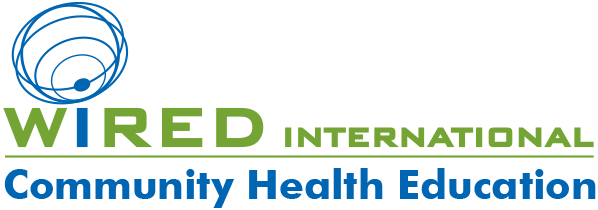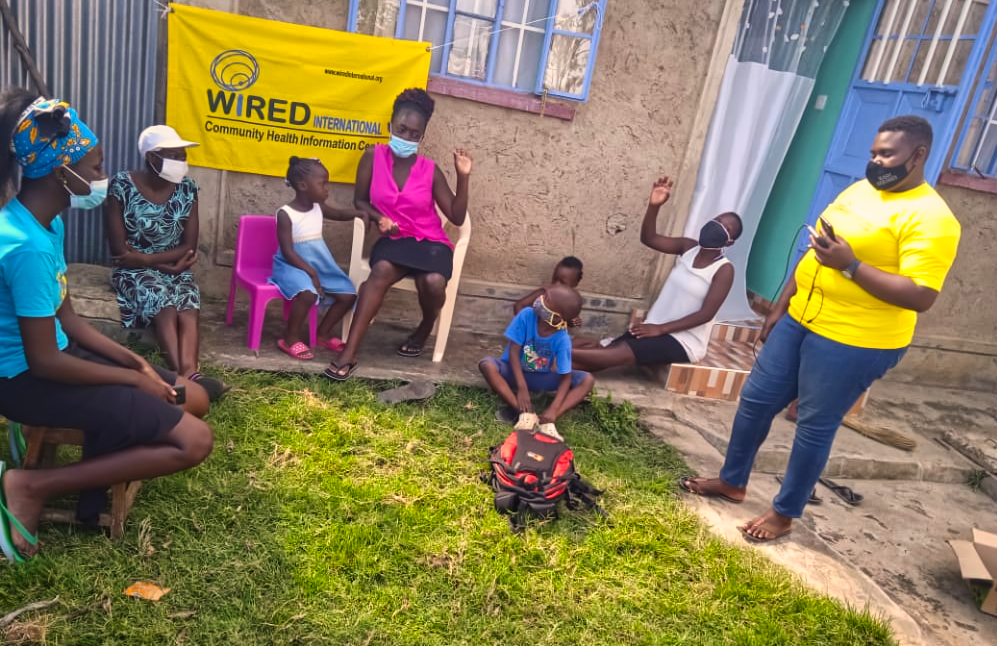Update from WiRED’s Community Health Workers in Kenya
Steadily Advancing Local Health
By Allison Kozicharow; Edited by Jessie Crowdy
WiRED International’s community health workers (CHWs) in Kisumu, Kenya, are now established, trusted health providers in their community. They teach thousands of people each month about prevention and healthy practices, provide basic clinical services and refer community members to clinics for treatment. Their package of services improves the health of the population.
During the month of November, 12 CHWs in Kisumu reached a total of 5,757 people with health services. COVID-19 was the primary concern followed closely by teaching about handwashing, HIV/AIDS, drug abuse, water treatment and sanitation, hypertension and hygiene. Each of the 12 CHWs met with at least 54 patients a week, and the largest number seen in a week by a single CHW was 277, most of them in health training classes.
As important as the basic training curriculum is, all community health workers are required to earn 50 continuing medical education (CME) units each year to maintain their certification.
Each worker successfully completed a 140-hour training course and passed a comprehensive final exam, before being awarded a CHW certificate. WiRED’s rigorous CHW course covers health basics, infectious and non-communicable diseases, patient assessment, clinical issues, health teaching and surveillance.
 As important as the basic training curriculum is, all community health workers are required to earn 50 continuing medical education (CME) units each year to maintain their certification. This CME program enables CHWs to reinforce their knowledge and learn new skills. They stay current on scientific findings, the latest diagnostics and treatments for health conditions that may impact their communities.
As important as the basic training curriculum is, all community health workers are required to earn 50 continuing medical education (CME) units each year to maintain their certification. This CME program enables CHWs to reinforce their knowledge and learn new skills. They stay current on scientific findings, the latest diagnostics and treatments for health conditions that may impact their communities.
Why is all this training and continuing education important? CHWs face a daunting task keeping their communities healthy. To illustrate, take a look at the following table, which contains the health issues the CHWs addressed for their patients during the month of November. The list highlights the wide range of topics CHWs are well equipped to address — through continuous training — so as to effectively serve populations in low-resource areas.
Health Issues (those most often seen indicated in blue)
COVID-19
HIV/AIDS
Malaria
Handwashing
Mother/Child Health
STIs
Teenage Pregnancy
Cholera
Depression
Family Planning
Drug Abuse
Water Treatment
Heart
Diabetes
UTI Infection
Migraines
Flu
Dental Hygiene
Nutrition
Anatomy
Common Cold
Cancer
First Aid
Vaccination
Early Pregnancy
Hypertension
Child Growth and Development
Healthy Child Feeding
Hygiene
Sanitation
Malnutrition
Asthma
Weight Management
Gender-Based Violence
Respiratory/Lung
Measles


